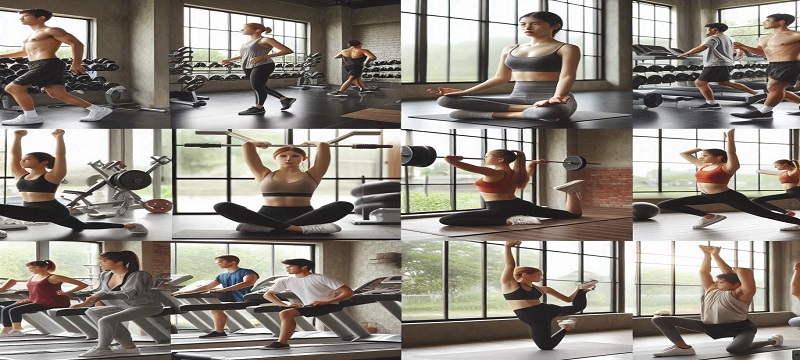Physical Fitness
Physical fitness refers to a state of health and well-being that allows individuals to perform aspects of sports, occupations, and daily activities without undue fatigue. It is typically achieved through proper nutrition, moderate-vigorous physical exercise, and sufficient rest.
Regular exercise and physical activity can improve cardiovascular health, strengthen muscles and bones, enhance flexibility, and promote overall well-being. A balanced diet provides the body with essential nutrients and energy to support physical activity and recovery. Adequate rest allows the body to repair and rebuild tissues, promoting muscle growth and recovery.

Physical fitness is crucial for maintaining a healthy lifestyle and reducing the risk of chronic diseases such as obesity, heart disease, type 2 diabetes, and some types of cancer. It also improves mental health, boosts energy levels, and enhances overall quality of life.
Physical fitness is generally divided into several categories
- Cardiorespiratory Endurance: This aspect of fitness refers to the efficiency with which the body delivers oxygen and nutrients needed for muscular activity and transports waste products from the cells.
- Muscular Strength: This is the ability of a muscle or group of muscles to exert force against resistance.
- Muscular Endurance: This is the ability of a muscle or group of muscles to continue to perform without fatigue.
- Flexibility: This refers to the range of movement in a joint or series of joints, and length in muscles that cross the joints to induce a bending movement or motion.
- Body Composition: This refers to the amount of fat mass compared to lean muscle mass, bone, and organs. This can be measured using various methods and is an overall indicator of health.

Conclusion
Physical fitness improves overall health and well-being, reduces the risk of chronic diseases such as heart disease, diabetes, depression, and obesity, and increases lifespan. It’s not just about athletic performance; it’s about quality of life. It’s important to engage in a variety of physical activities to address all aspects of fitness.

Regular physical activity, balanced nutrition, and adequate rest all contribute to good fitness. Those who maintain a high level of physical fitness are less prone to chronic diseases, have a lower body fat percentage, and can perform daily tasks more efficiently and effectively.
